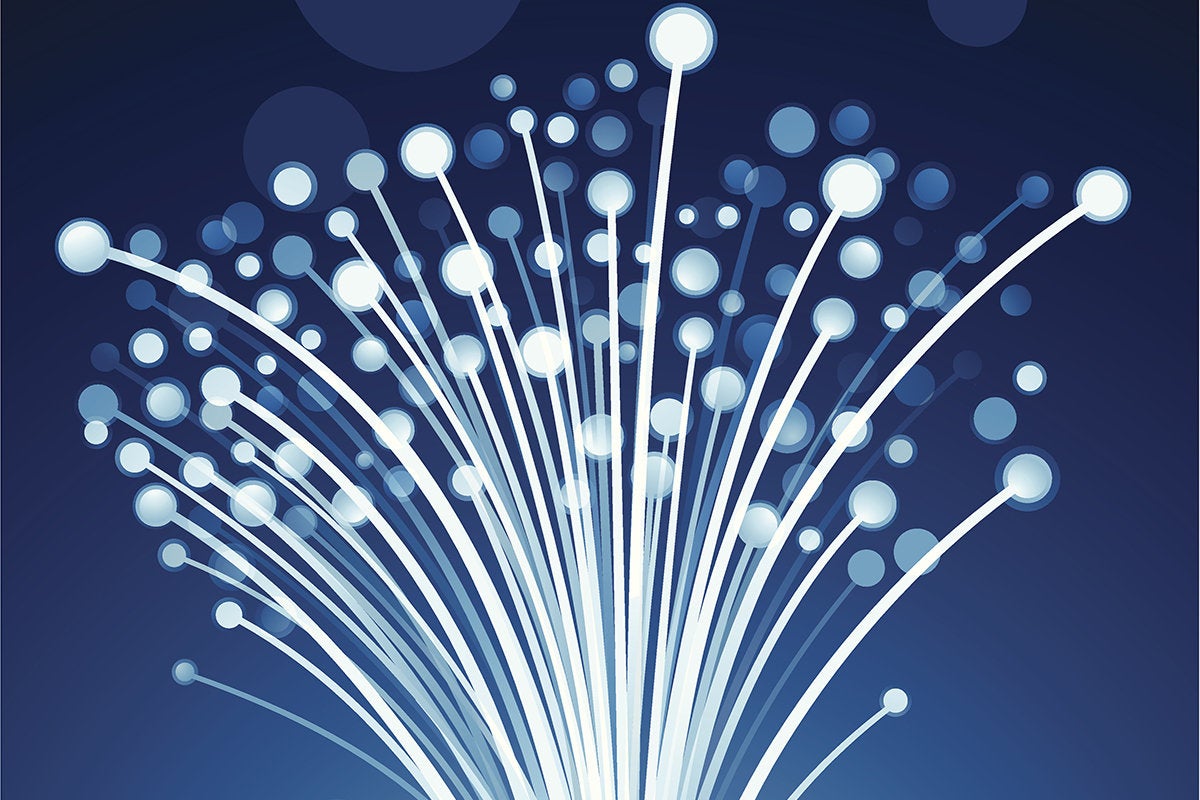- I recommend the Pixel 9 to most people looking to upgrade - especially while it's $250 off
- Google's viral research assistant just got its own app - here's how it can help you
- Sony will give you a free 55-inch 4K TV right now - but this is the last day to qualify
- I've used virtually every Linux distro, but this one has a fresh perspective
- The 7 gadgets I never travel without (and why they make such a big difference)
The new internet speed record twice as fast as the old one

Everyone wants faster internet speeds. Even people who already have high-speed connections want faster internet, including enterprise workers and IT pros. More speed is what they need, or at least what they would strongly prefer, because the faster data is transmitted between two devices, the faster decisions can be made and actions taken. In the Darwinian digital economy, slow Internet speeds are for laggards and also-rans!
So how fast is fast? Some might say the average US internet speed of 99.3 Mbps as measured earlier this year by HighSpeedInternet.com is more than adequate, while an enterprise with a sizable workforce and growing number of connected devices and edge networks would need far more bandwidth.
For those who believe their internet can never be fast enough, though, there is some good news. Engineers in Japan have smashed the previous world record for fastest internet speed, reaching data transmission rates of 319 terabits per second, nearly double the 178 Tbps mark set just a year prior.
Here’s how they did it, as described by Freethink’s Kristin Houser:
To break the record for fastest internet speed, researchers at Japan’s National Institute of Information and Communications Technology developed an experimental optical fiber with four cores, instead of just one.
They then combined their fiber with a laser that fired pulses at different wavelengths and multiple signal-amplification techniques. This enabled them to transmit data over a distance of more than 1,800 miles at 319 Tb/s.
If you’re ready to hook up this flamethrower to your enterprise network, you are advised to curb your enthusiasm because the “laser and amplifiers used to break the fastest internet speed record are not cheap,” Houser writes.
All is not lost for you dreamers, however. The experimental, four-core optical fiber used to set the latest speed record fits within the standard outer diameter of 0.125 mm currently used for the single-core fibers relied on today for fiber-optic internet service. This could accelerate implementation because there would be no need to replace some existing hardware infrastructure.
“The standard cladding diameter, four-core optical fiber can be cabled with existing equipment, and it is hoped that such fibers can enable practical high data-rate transmission in the near-term,” the researchers said in their published paper.
It’s anyone’s guess how the researchers define “near term,” but in the long term these four-core optical fibers could be part of the network backbone necessary to power the digital economy after 5G. And driving that economy will be automation, connected vehicles, connected offices and homes, connected public infrastructure, streaming multimedia, augmented reality and virtual reality technologies, and devices such as personal and industrial drones. These technologies require backbone networks to for real-time transmission of data to ensure safety and optimal performance.
For enterprise IT professionals, exponential increases in data transmission speeds are always welcome. While the velocity attained by the Japanese team currently may be out of reach for the average enterprise network, the trend is headed in the right direction. It means there will continue to be ample backbone bandwidth to support the growing need sparked by new technologies.
Copyright © 2021 IDG Communications, Inc.

